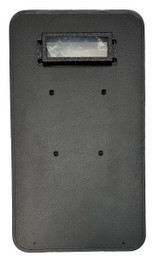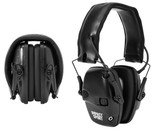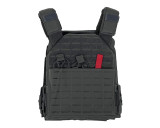How Body Armour Works - Battle Steel®️
What is body armour?
Body armour is the generic term for any item of clothing which is worn to prevent injury. While body armour is most commonly known as a ‘bulletproof vest’, it is designed to protect the wearer from all sorts of threats – knives, shrapnel, bullets, and projectiles such as bricks.
Armoured vests have always been part of the protective gear of military personnel, police, bodyguards and security guards, and are increasingly being purchased by concerned civilians too. As the different kinds of body armour are intended for particular situations and to protect against certain ballistic threats, there is no one-size-fits-all when it comes to choosing your protective clothing.
The armoured plates which make up a bulletproof vest are available in different shapes, sizes, weights and materials. Most importantly, each plate is assigned a different National Institute of Justice (NIJ) threat level, which designates the specific ballistic threat that the plate can withstand. Military personnel will probably require Level IV hard plates, heavy but capable of withstanding armour-piercing rifle ammunition, whereas for civilians travelling through high-risk areas, Level II soft armoured plates provide sufficient protection from handgun shots while being light and discreet.
What are some of the body armour solutions available today, how do they work, and where can you purchase your protective clothing?
The science behind body armour
Ammunition is fired at an incredibly high velocity and causes deadly blunt force or penetrating trauma to whatever it strikes. Body armour works by absorbing and dissipating the bullet’s kinetic energy across a wider surface area, therefore reducing the damage to your body.
We can imagine a bulletproof vest as an extremely strong web. The fibres which make up the web are engineered to withstand extreme force, and when they are woven together they strengthen each other. These intertwined fibres are layered into a seamless, dense sheet which forms the bulletproof vest. A final layer of protection is provided by plastic or other materials which cover the armoured plate.
When a ballistic threat strikes an armoured plate, its energy is transferred from the point of impact across the web of fibres in all directions. Some of the layers might be penetrated, but the layers beneath help to slow and warp the bullet and eventually bring it to a halt. If shot whilst wearing a bulletproof vest, the wearer will still experience the force of the impact, but will not face the serious injury of a bullet entering their body.
There is a caveat: no body armour is truly ‘bulletproof’. Even when the energy of a bullet is absorbed by the vest, the force of the projectile can still bruise you and knock you off your feet.
What are the materials used to make body armour?
Soft body armour:
Soft armoured plates consist of strong fibres which are flexible enough to be incorporated into items of clothing. There are several different types of material:
- Kevlar: this is the most well-known type of soft body armour. Its fibres are a kind of aromatic polyamide (strong, heat resistant fibres also known as aramid) which is five times stronger than steel.
- Vectran: the liquid-crystal polymer fibres which make up Vectran body armour are twice as strong as Kevlar.
- BioSteel: these fibres are produced by inserting the genes of a silk-spinning spider into the genome of a goat, and then extracting the protein from the goat’s milk. BioSteel can be four times stronger than Kevlar fibres.
Hard body armour:
This type of body armour can be imagined as a 21st-century version of a medieval knight’s suit of armour. The layering of ultra-hard materials provides unrivalled protection against serious ballistic threats, such as armour-piercing rifle ammunition. Hard body armour offers a higher level of protection than its soft counterpart, although these plates are much heavier and less discreet.
Some materials used in hard plates include:
- Metal: this type of hard armour is made from tempered steel which is extremely tough and resistant to bullets.
- Ceramic or composite: these plates are becoming increasingly popular. They combine alumina (a very hard material with a high melting point, the same material that sapphires are made of) with ultra-high-molecular-weight polyethylene or aramid.
National Institute of Justice body armour testing
With so many styles and brands of body armour on the market, how can you decide which model to buy? To answer this life-or-death question you should look to the NIJ and their body armour testing standard, known as the Ballistic Resistance of Body Armour NIJ Standard-0101.06. This is the only testing process that has been approved by the U.S. military and police forces, so you can rest assured that you are making the right choice.
The NIJ’s standard assigns certain threat levels to armoured plates – Levels I, II-A, II, III-A, III and IV, from weakest to strongest. Each level determines the specific calibre and velocity of ammunition that the plate is able to withstand. Dozens of armour samples are used when testing a specific plate and all must pass before earning the NIJ certification.
The testing process is rigorous and simulates real-life conditions that the armour wearer might encounter. One of the tests involves firing certain ammunition – for example six .9mm full metal jacket bullets at a Level II plate – and then inspecting the plate for any faults, cracks or deep penetration. Another test involves placing the armour in a tumbler for several days, mimicking the five years of wear and tear that NIJ-certified armour must guarantee. As well as this, soft armoured panels are tested in water to ensure that their fibres will not loosen in wet weather conditions or underwater.
What’s next for body armour?
The technology of body armour is continually evolving to be even lighter and stronger. Manufacturers are branching out to different markets – not only their police and military buyers, but also civilians who are increasingly looking for wearable protection in their day-to-day lives.
Advancements in nanotechnology have allowed researchers to develop some truly ground-breaking forms of armour. One example is liquid body armour, which is made by saturating Kevlar in a shear thickening fluid (STF) of silica particles suspended in polyethylene glycol. ‘Shear thickening’ means that a liquid behaves like a solid when it encounters a force (like the mixture of corn starch and water that can be shaped into a ball). When a bullet or knife strikes the STF-reinforced Kevlar, the fluid hardens in milliseconds and adds an extra level of impenetrability to the armour.
The slime of the hagfish, a deep-sea species more than 300 million years old, is another innovative ingredient in body armour technology. Hagfish slime is ultra-stretchy, can expand vastly in volume in a fraction of a second, and is almost as strong and light as spider silk, but is much easier to harvest in large quantities. When the slime is dried out the resulting fibres become a strong and soft thread which can be woven into body armour.
Another new discovery is composite metal foam, which has a structure of solid metal around gas-filled pores. The material is very strong and heat resistant, but its high porosity makes it much lighter than standard metal armour.
Where can I purchase body armour?
At Battlesteel®️ we offer a wide range of personal protective solutions for military, police, and private civilians, including Level III – Level IV armour and a variety of plate-carrying vests. We also have detailed guides to the different types, sizes and protection levels of armoured plates, so that you can make an informed decision before purchasing your body armour.
Recent Posts
-
Understanding Ballistic Shield Ratings and Their Applications
The Trusted Name in Tactical Defense - BattleSteel® When it comes to protecting those who protect us …2025-04-19 -
The Importance of Hearing Protection in Tactical Environments
The Legacy of BattleSteel® BattleSteel® is a trusted name in the world of tactical defense equipment …2025-04-14 -
How to Properly Fit and Wear a Plate Carrier
About BattleSteel and Their Mission BattleSteel is a trusted name in the tactical gear industry, ren …2025-04-11


